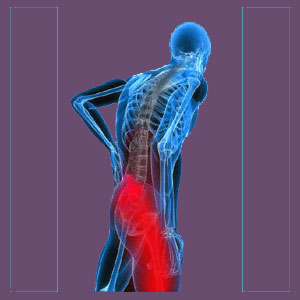
Piriformis syndrome right leg symptoms occur on one side of the body, but might eventually also exist in both legs according to diagnostic statistics. Suffering from piriformis pain on the right side is about as common as experiencing similar symptoms on only the left side. There is no special relevance to symptoms that exist on either side, as both unilateral expressions can be created by the exact same mechanisms of action.
The main questions that we receive when it comes to right sided piriformis syndrome is whether or not the pain will spread to the other leg, becoming a bilateral expression, as well as inquires about why the pain might move from one leg to the other and remain unilateral. While there are no universally applicable answers to these questions, we do have lots of data to support very accurate statistical prognosis.
This article investigates facts regarding right sided piriformis pain and how the condition is likely to progress in the future.
Piriformis Syndrome Right Leg Moving Sides
We observe and have also documented the reports from many doctors that piriformis syndrome tends to migrate from one leg to the other when successfully treated. This migration can occur in several distinct varieties:
Many patients receive care from their primary left or right sided piriformis syndrome and are cured within several weeks to several months. A minority of patients have pain for more than 1 year before it resolves. Regardless, symptoms appear on the opposite side within 4 to 12 weeks on average and remain for much longer. In fact, symptoms on the migrated side are usually highly treatment resistant, typically lasting 100% to 300% longer than the original side. Some patients do not report finding resolution of the migrated side pain, despite several years of active therapy.
Less commonly, patients might report migration prior to symptomatic resolution on the primary side. Usually, both sides will be symptomatic for a short time, followed by resolution of pain on the primary side and typical defiant pain on the migrated side that endures longer than in the originally affected leg.
The least common scenario describes symptoms that resolve and then migrate as detailed in the first example, but are not treatment resistant, and in fact, typically resolve quickly and completely within a short time frame.
Piriformis Syndrome Both Legs
Some patients develop stubborn pain in the primary right leg and then also develop subsequent pain in the other leg so that the condition evolves into a bilateral pattern, instead of unilateral. The circumstance through which this may occur might follow any of the following established patterns:
Most commonly, primary pain will exist unilaterally for several months to a year, without responding favorably to a variety of treatment types. As escalation of care occurs, symptoms migrate to affect both legs.
Less commonly, symptoms might move back and forth in unpredictable patterns. Sometimes that pain might be unilateral and sometimes bilateral, with the pain coming and going on both sides seemingly randomly.
In both of these scenarios, pain in the migrated leg is usually less severe than in the primary leg, but in about 10% of patients, this statistic reverses, being worse in the migrated leg compared to the originally affected side.
Piriformis Syndrome Right Leg Susceptibility Statistics
Some doctors and therapists report prevalence in people suffering pain on their dominant side versus their weaker side. We have studied this phenomenon, as well, but find no correlation between the side affected by piriformis pain and the dominant side preference of the individual. In fact, we have also researched many studies that show these dominant side correlations and they seem to negate each other in reports of dominant vs weak side expression of pain on an equal ratio. Furthermore, the numbers of patients involved in such studies is usually very low, with the majority being completed by single clinicians who are probably looking for patterns where the results are merely incidental.
While theories of the stronger side or weaker side of the body being more or less susceptible to piriformis syndrome continue to propagate, we can not support either position, as we simply have not observed evidence that is objective and convincing in our own extensive diagnostic and treatment experience or in the limited clinical research projects that provide these details.
Piriformis Pain > Piriformis Syndrome > Piriformis Syndrome Right Leg





